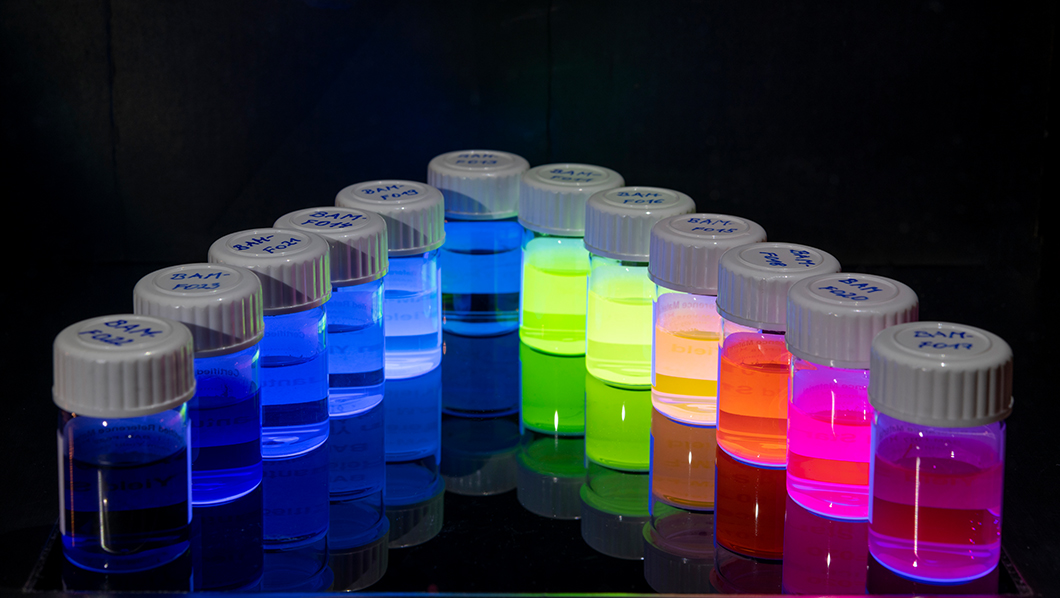
Reference Materials: Fluorescence standards
Source: BAM
Fluorescent materials are used in many areas today: on the security codes of banknotes, in plasma screens or in medical diagnostics. The crucial factor here is that the materials luminesce intensively over a long period of time. To evaluate this property, companies need reliably characterized reference materials. The Bundesanstalt für Materialforschung und -prüfung (BAM) is now the first institute worldwide to offer such substances. They will make it easier in the future to characterize and compare luminescent materials and to validate the optical measuring devices required for this purpose. The reference materials are now available in BAM's webshop.
Luminescence, that is here referred to as fluorescence, always occurs when substances illuminated by a light source absorb part of the photons and emit them again shortly afterwards with lower energy. This is the reason why, for example safety stripes on high-visibility vests glow in the dark. Numerous substances can be made fluorescent in this way: organic dyes such as indocyanine green, metal complexes, loaded nanometer-sized polymer particles or even semiconductor nanocrystals.
Today, these luminescent materials perform many important tasks, for example in medical diagnostics: As contrast agents, they make it possible to detect diseases of the fundus of the eye. During surgery, they can enable to distinguish tumor tissue from healthy tissue. In the automated reading of PCR tests used, e.g. for the detection of SarS-CoV-2, they can be used to determine the level of viral load.
Fluorescent substances are also found in many displays, car headlights and photovoltaic systems. For the manufacturing companies, it is important to use intensely and long luminescent substances in the desired wavelength range. When selecting such materials, it helps them to know exactly what their "fluorescence quantum yield" is: This is the term scientists use to describe the ratio between the number of emitted and absorbed photons which presents a measure for fluorescence efficiency.
To accurately determine the fluorescence quantum yield, well-characterized reference materials are needed. As early as 2014, the International Electrotechnical Commission (IEC), a global standards organization for the field of electrical engineering and electronics, therefore called for the development of appropriate reference materials for reliable measurement methods to determine this key parameter.
"We were predestined for this task due to our many years of expertise," says Dr. Jutta Pauli, who has been working in this field at BAM for many years. To this end, BAM has measurement setups developed in-house and traceably calibrated, which are a unique selling point internationally, and has extensive experience in developing fluorescence standards and performing fluorescence quantum yield measurements.
Under the leadership of Jutta Pauli, supported by her colleague Dr. Ute Resch-Genger, an interdisciplinary team at BAM set itself the goal of developing and certifying reference substances for the entire visible light spectrum. One challenge was to determine the quantum yield of the selected substances very precisely. This required, among other things, particularly sophisticated calibration procedures for the measuring equipment used.
Twelve certified reference materials are now available. In the future, they will enable numerous companies worldwide to reliably and comparably characterize new fluorescent materials and their measurement setups. The new reference materials are now available in BAM's webshop.


